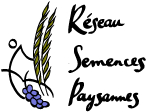Niveau juridique : Union européenne
Texte de la question :
« Ambrosia artemisiifolia is native to North America and is a widespread species which has been brought to Europe and has spread across large areas of the continent. Not only its pollen but also skin contact with the flower heads can trigger serious allergies in humans.
Under Implementing Regulation (EU) 2016/1141, the Commission is compiling a list of invasive alien species of Union concern. According to a research project financed by the Commission (Final report: ENV.B2/ETU/2010/0037), Ambrosia artemisiifolia is such a species. It does not, however, feature in the list.
1. What reasons does the Commission give for Ambrosia artemisiifolia not appearing in the list of invasive alien species of Union concern?
2. What steps need to be taken in order for Ambrosia artemisiifolia to be included in the list?
3. What further action will the Commission take to prevent Ambrosia artemisiifolia from becoming more widespread in the European Union and to protect and support Union citizens, for example allergy sufferers, but also farmers, who are affected by it? »
Réponse de Mr Sinkevičius au nom de la Commission européenne :
« The common ragweed Ambrosia artemisiifolia has already been considered for inclusion on the list of invasive alien species of Union concern. According to the available evidence, including the study referred to in the question, the species has a severe impact on human health due to its high allergenic potential. It is also an important crop weed in parts of Europe. However, the available evidence suggests that the species has very little impact on biodiversity or the related ecosystem services, which is the focus of Regulation (EU) 1143/2014. It was therefore concluded that it does not meet the criteria for inclusion on the list as set out under Article 4(3) of the regulation , in particular paragraph 4(3)(c). In evaluating these criteria , the Commission is assisted by the Committee on invasive alien species, which also needs to provide a positive opinion to the inclusion of species on the list.
The EU has financed several research projects that helped to increase the understanding of the problems caused by the species and provided guidance for combating it. Furthermore, the directive on undesirable substances in animal feed has established measures as regards the presence of seeds of common ragweed in feed materials and compound feed containing unground grains and seeds. These measures are in force since 1 January 2012 and since then there have been several Rapid Alert System for Food and Feed (RASFF) notifications on the presence of seeds of common ragweed in sorghum and bird feed, contributing to avoiding the further spread of common ragweed in the EU. »
Lien vers la page de la question ICI.
